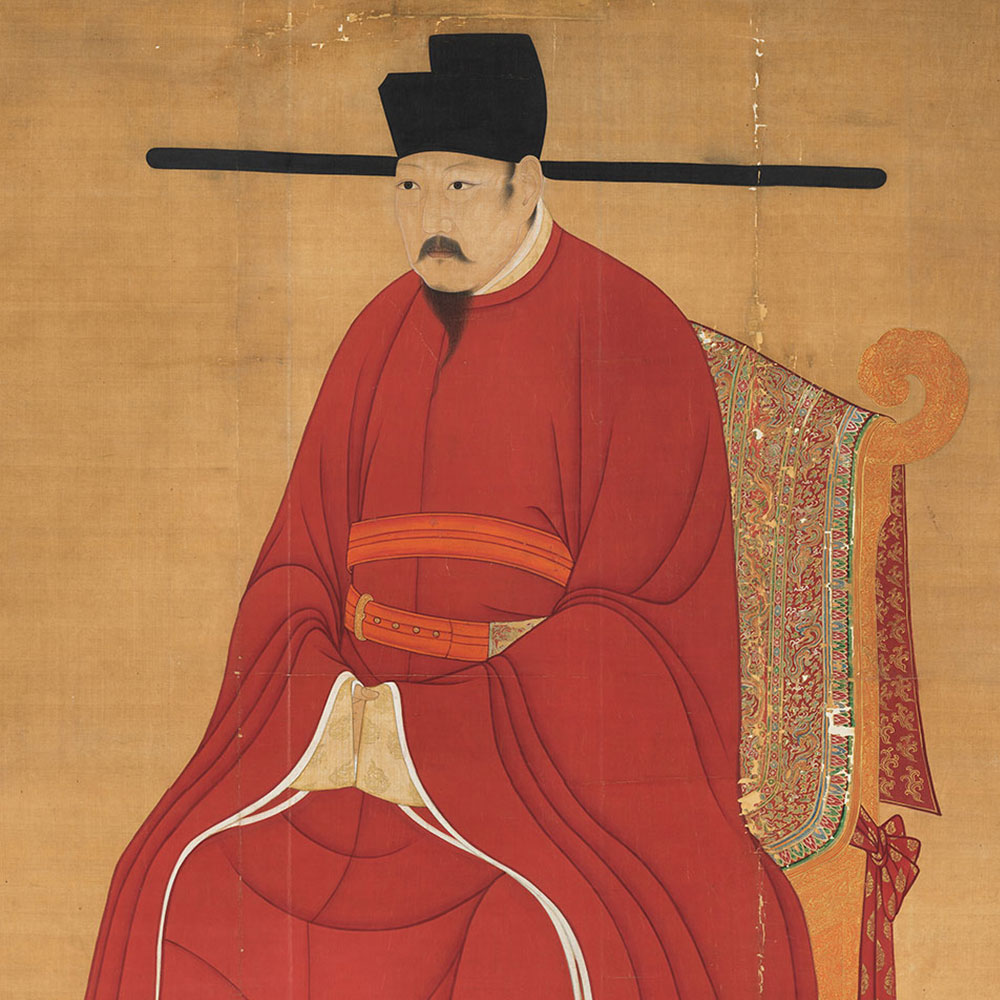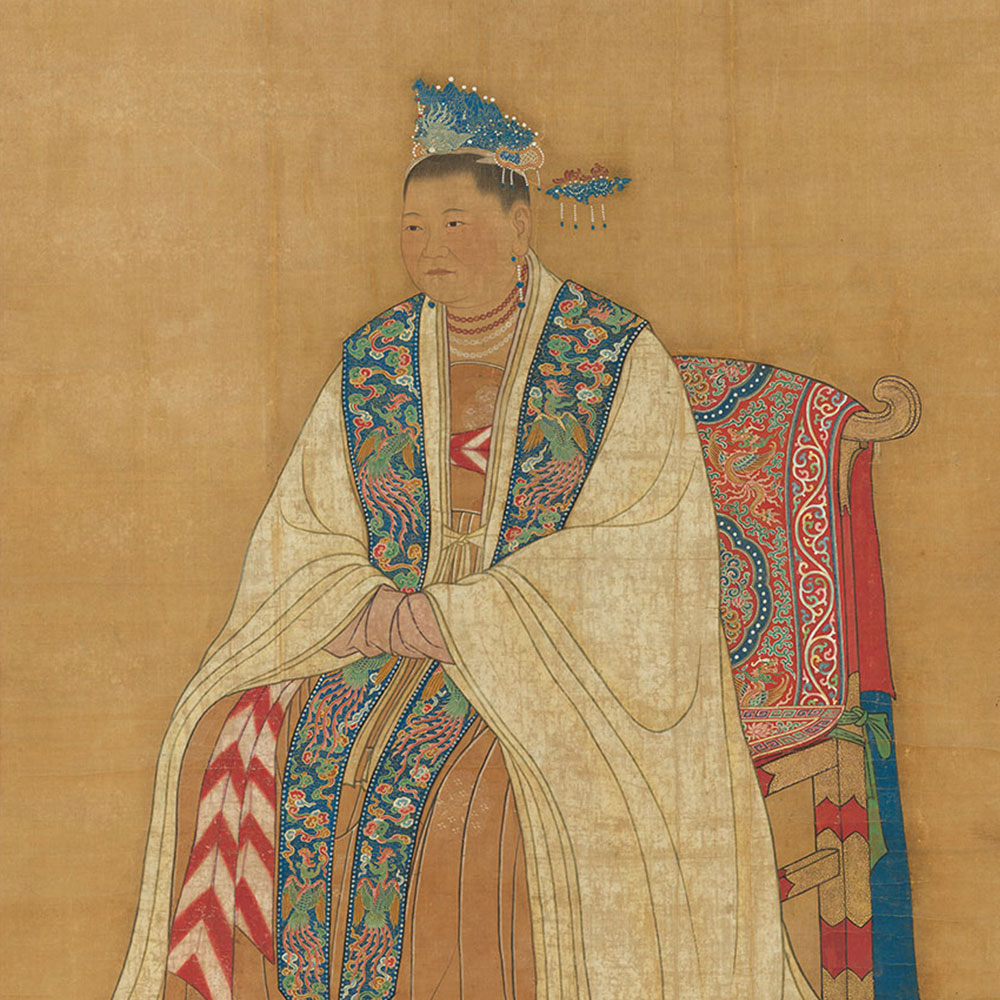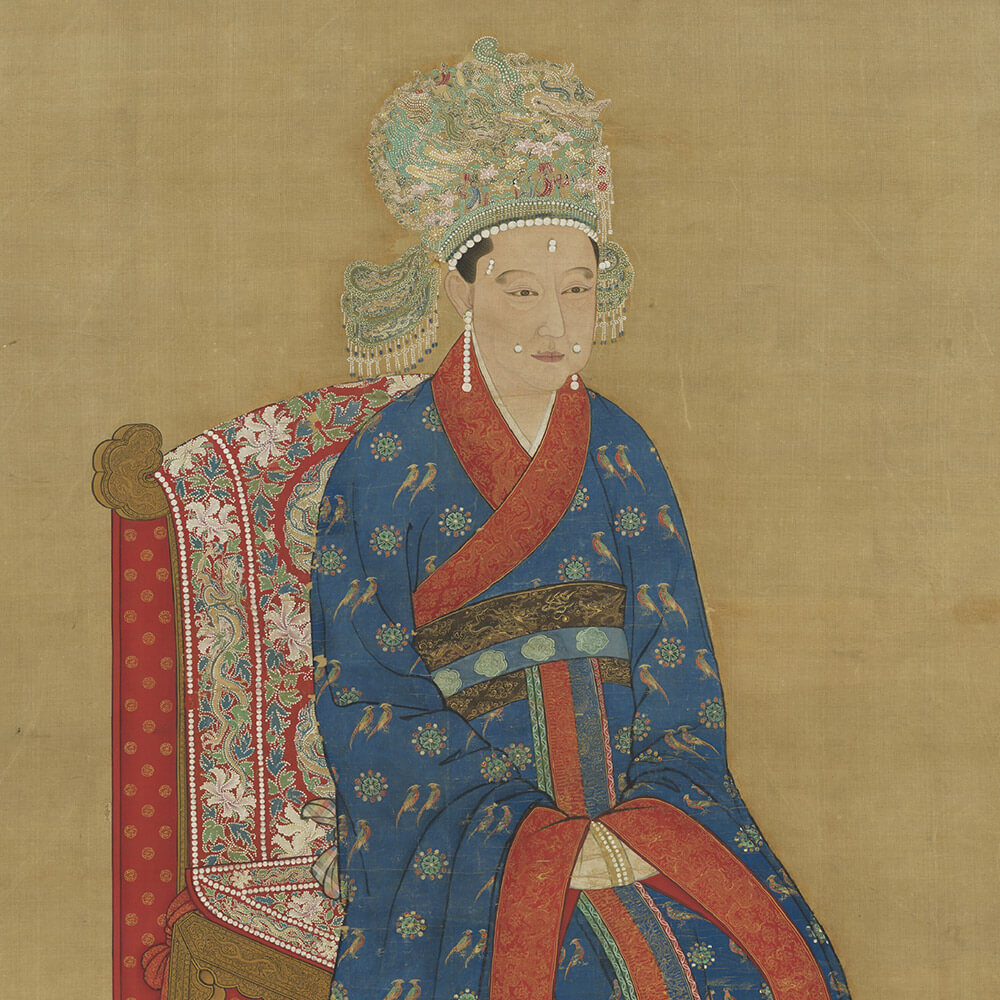Subtle Forms of Luxury-Imperial Portraits of the Song Dynasty
Few major differences appear in the clothing of Song dynasty emperors and their officials. However, the textiles woven with gold that appear almost hidden at the collar and cuffs of the imperial figures' clothing in these portraits and the exquisite cushioning for their feet and back clearly reflect an aesthetic of refined yet subdued luxury that is not always obvious at first glance.
- Seated Portrait of Emperor Renzong of the Song
The Northern Song emperor Renzong, personal name Zhao Zhen (1010-1063), is shown here wearing a black official's hat with horizontal wing-like flaps and a plain red robe. Although unassuming at first glance as he sits solemnly on a high-backed dragon throne, the emperor's collar and cuffs reveal inner garments that are delicately adorned in gold. The backing and mat that cushion the throne and accompanying footrest are also exquisitely designed. Such luxurious items must have been nothing more than common consumer goods for the emperor, expressing the daily life of his ultimate authority.
- Seated Portrait of Xuanzu's Empress of the Song
Emperor Xuanzu's (902-961) empress was surnamed Du and was the mother of Zhao Kuangyin (927-976), founder of the Song dynasty. In this portrait, she wears clothing that differs from that of other Song dynasty empresses. Over her light yellow outer robes is draped a pearl-hemmed piece of cloth with phoenix patterns that give her a more opulent presence. Underneath them, she wears a semi-translucent gauze skirt that reveals the decoration of her robes beneath it and that extends beyond the border of the painting. This rare portrait of an empress offers us a clearer picture of the material culture among imperial ladies in the Song dynasty.
- Seated Portrait of Guangzong's Empress of the Song
Li Fengniang (1145-1200), empress to Guangzong of the Southern Song, has eyebrows in this portrait similar to the shape of commas, giving this unique feature of the portrait a lifelike and individual quality. She wears an extravagant dragon-and-phoenix hairpin crown made from pearls of different sizes, pearl-inlaid jewelry applied to her face, and a most majestic empress's ceremonial robe that is deep blue in color. Her clothing is decorated with colorful pairs of pheasant, and she wears a large two-color sash hanging from the upper abdomen. She also faces to the right and is seated upright on a high-back chair. This is a standard format of Southern Song empress portraits that continued from the Northern Song period.
Empresses and consorts exerted considerable influence over the ages and often held power behind the scenes, making them holders of power not to be overlooked in Chinese history.





